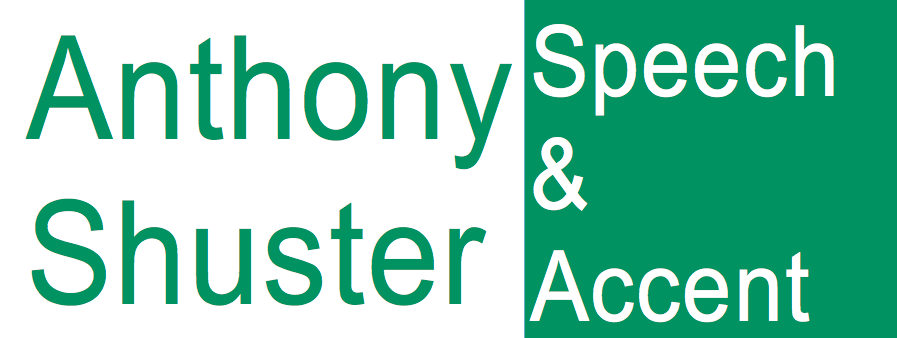The Grandma Test: How Doing the Listener’s Work Transforms Your Speaking
You've just delivered a really thorough, detailed presentation; you know this stuff inside out. You have the figures and graphs to back it all up, you have the answers to all their potential questions.
So why do the audience all have that puzzled look on their faces?
You've done so much work. Why do they still not get it??
Are you ‘doing the listeners' work’?
You obviously know what you're doing. You wouldn't have got this far in your career if you didn’t.
But if you're here, browsing the web, looking at the sites of public speaking and accent reduction coaches like me and my colleagues, you must be thinking that it's something to do with the way you speak.
When you speak… are you making your listeners do the work?
Keep reading for a simple test that can make your speeches and presentations instantly clearer
What are 'high quality green spaces'?
Jargon alert: ‘high quality green spaces’ like this are sometimes known as ‘parks’
I once worked with a senior manager on his communication skills, particularly on speaking and writing for a general audience.
This person worked in planning and used a lot of industry jargon - in reports and articles he often referred to 'high quality green spaces'.
'Parks', I said to him. Ordinary people call them 'parks'.
Ordinary people are not stupid - they can figure out what 'high quality green spaces' are, if they have the time and headspace to think about it. If they put in some work.
Why should they do the work, though?
The speaker should be doing the work - the careful thinking about whether there is an easier way, fewer words, or simpler words, to communicate an idea.
Do you pass the Grandma Test?
The Grandma Test: try explaining your new product to your nan when she’s busy getting the roast in the oven
The Grandma Test is -appropriately enough - a simple idea:
Can you explain your product, idea, or argument to your grandma - or anyone who has no background in your field?
Grandmas are not stupid, remember. They're just busy with other stuff.
Understanding the passions of a young whippersnapper like you is something they have to work at, while they're busy thinking about grandma things, like apple crumble, Martin Lewis, and what's happening on Celebrity Traitors.
This test is about doing the listener’s work: reducing unnecessary mental effort, telling a good story, and making sure your message lands.
It does not mean simplifying to the point of dumbing down. It’s about respect, empathy, and efficiency.
It's about conveying VALUE.
'I'm going to make you do as little work as possible - I'm doing all the work instead. I'm not taking up too much of your time and mental capacity'.
Having all the work done for you conveys VALUE because it makes listeners FEEL valued: 'this is easy, this is enjoyable, so I'm happy to listen because you sound like you have something worth hearing and you really seem to want to speak to me personally'.
VALUE makes you memorable. When your audience doesn’t struggle to follow your ideas, they retain more, engage more, and respond more positively.
They feel that you value THEM. Not just the subject matter you're speaking about.
You love your grandma, right? That's why you speak to her in that special way! So lets make our listeners feel loved! Let's do the work so they don't have to :)
How to Pass the Grandma Test: Practical Steps
Applying the Grandma Test is straightforward, but it takes practice. Here’s a step-by-step approach you can implement immediately.
1. Strip Out Jargon and Technical Language
Replace industry-specific terms or buzzwords with everyday language your listener will understand. For example, instead of saying 'high quality green spaces', just call them 'parks'.
For more on this, see my recent post on how to speak like a real person, not like an AI.
2. Use Analogies and Examples
Analogies anchor complex ideas in familiar experiences. Saying “Your immune system is like an army defending your body” instantly conveys the concept more vividly than technical explanations of how the immune system works. Metaphors draw on what your listener already knows and understands, making your ideas easier to understand and remember.
3. Don’t Use Too Many Examples
There's such a thing as overdoing the tortuous metaphors, to the point where it all gets confusing, or sends your listener down the wrong track. Overthinking your content and word choices can sometimes be an insurance policy against poor vocal delivery - for more on that, read this recent post of mine.
4. Find a 'Grandma' (or make me your grandma)
Practise explaining your idea to someone outside your field. Notice where they hesitate or ask for clarification, and then make those bits even simpler.
When I work with clients on their presentation skills or public speaking, I'm often the perfect “practice audience” because I'm an expert in accent reduction and public speaking, but not in anything else!
I've listened to presentations on everything from financial engineering to crypto to plastic surgery, and if I don't understand something, I'll just say so!
5. Think about How You Sound, Not Just What You Say
Clarity isn’t just about words; it’s about how you say them. Careful pacing, with well-placed pauses, and plenty of vocal energy to ensure your message sounds like something worth hearing.
You could call this the 'Deaf Grandma' Test :)


